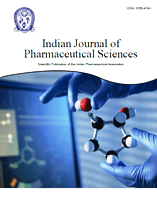Abstract
Clinical Application of the Prevention of Diverticulum Formation by Folding and Suturing Previous Uterine Scar during A Second Cesarean Section with the Use of Carboprost Tromethamine Suppositories
The Second Affiliated Hospital of Zunyi Medical University, 1School of Public Health, Zunyi Medical University, 2Department of Prosthetics, The Affiliated Stomatology Hospital of Zunyi Medical University, Zunyi, Guizhou 563000, China
Correspondence Address:
Zhou Yuanzhong, School of Public Health, Zunyi Medical University, Zunyi, Guizhou 563000, China, E-mail: zhouyuanzhongabc@sina.com
To evaluate the impact of a novel surgical technique involving the use of carboprost tromethamine suppositories, in conjunction with folding and suturing the lower uterine segment at the site of a previous cesarean section scar, on the incidence of early postoperative scar defects in subsequent cesarean sections. Between March 2019 and June 2022, 133 patients who received the intervention formed the study group, while a control group of 130 patients received standard care. Both cohorts underwent cesarean section via the transverse incision of the lower uterine segment. The study group additionally received carboprost tromethamine suppositories postoperatively. Data on maternal demographics, operative details, and postoperative outcomes were collected and followed up for 6 to 12 mo. Statistical analysis was performed using statistical package for the social sciences 18.0, with a p value of less than 0.05 indicating significance. The study group demonstrated no significant differences from the control group in maternal age, gestational age, delivery time, body mass index, or new-born birth weight. Operative time was modestly extended in the study group due to the intervention. Postoperatively, there were no significant differences in intraoperative blood loss, intestinal exhaust time, hospital stay duration, or postoperative lochia bleeding. The study group exhibited a reduced rate of abnormal vaginal bleeding (8.27 % vs. 18.46 %) and a lower incidence of diverticulum formation (3.01 % vs. 11.54 %). Notably, the thickness of the lower uterine muscle layer was significantly greater in the study group at both 42 d and 6 mo post-surgery, with no cases of diverticulum formation observed at 6 mo in the study group, compared to 5.50 % in the control group. The integration of carboprost tromethamine suppositories with the surgical technique of folding and suturing during a second cesarean section significantly lowered the rate of scar diverticulum formation and enhanced patient outcomes. This approach presents a promising advancement in the prevention of postcesarean section complications, warranting further investigation and potential clinical adoption.
Full-Text | PDF



